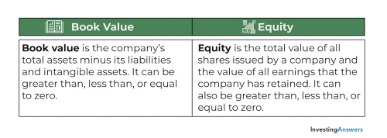Content

Job costing is commonly used in the construction industry, where costs vary widely from job to job. Construction projects require a range of inputs, from labor to various types of materials and tools. Identifying the exact cost of all inputs for specific jobs can be challenging. Costing techniques in construction management require input workers on the job and solid record-keeping. Job costing can be especially useful for construction project managers to keep track of their total job expenses. The job costing system must track the cost of the labor used on a job.
What is job costing system in cost accounting?
A job costing system involves the process of accumulating information about the costs associated with a specific production or service job. This information may be required in order to submit the cost information to a customer under a contract where costs are reimbursed.
Consequently, a How Job Costing Works In Cost Accounting costing system may contain a large number of specialized rules that are not broadly applicable to all jobs for which it is compiling information. In a job costing environment, non-direct costs are accumulated into one or more overhead cost pools, from which you allocate costs to open jobs based upon some measure of cost usage. The key issues when applying overhead are to consistently charge the same types of costs to overhead in all reporting periods and to consistently apply these costs to jobs. Otherwise, it can be extremely difficult for the cost accountant to explain why overhead cost allocations vary from one month to the next. Download this free job cost sheet to help you track the direct and indirect costs of individual projects and jobs. Given the difficulty, businesses sometimes apply a blanket overhead fee to each project, such as 10% per job.
Why is Job Costing Important for your Small Business?
In addition, job costing is suitable for small businesses, while process costing is ideal for larger companies. Alexa and Charles spent a combined 20 hours on this project. Multiply direct labor hours by the overhead rate to arrive at an allocated overhead of $402.60. Think about a cost object as a sponge that absorbs your money. The object can be a customer, job, a product line, or a company division. Carefully identifying cost objects will help you cost your product or service accurately. Industries which produce products as jobs use this method.
- In all cases, the user must correctly identify the job, so that the cost information can be applied to the correct job.
- \nFor some businesses, nearly every customer job has different costs, and that’s where job costing asserts its value.
- Job costing can be especially useful for construction project managers to keep track of their total job expenses.
- For example, a ship builder would likely accumulate costs for each ship produced.
- One client has a sign in their office that reads, “If you don’t know your labor costs, you have already failed.” This statement could not be any truer.
https://intuit-payroll.org/ costs should also include a margin to account for wastage. Process costing is a method of cost accounting that focuses on the production or manufacturing processes and how an organization performs them. It is also known as activity-based costing or work measurement system . The term « process » refers to any step in the production or manufacturing process. Process costing is different from job costing because it tracks all the steps involved in producing a single item.
ASC 842 Account For Leases Impact on Contractors
For example, Creative Printers recently learned that cookbooks were not profitable. On the other hand, printing instruction manuals was quite profitable, so the company has focused more on the instruction manual market. To illustrate a job costing system, this section describes the transactions for the month of July for Creative Printers.
What is the main step in job costing?
One of the main steps is to identify indirect costs related to the particular job and handle the cost in a proper manner. 5. Computing rate of production for calculation of total cost is necessary for job costing. On the basis of production rate direct and indirect costs are set.
The worker is responsible for completing the timesheet, including the date, job number, and hours worked on each job. Differentiate between departments based on cost and materials required. Use cost codes to efficiently group similar types of expenses. Streamlining your cost codes can also help you compare historic performance against similar jobs. Xero does not provide accounting, tax, business or legal advice. This guide has been provided for information purposes only.























